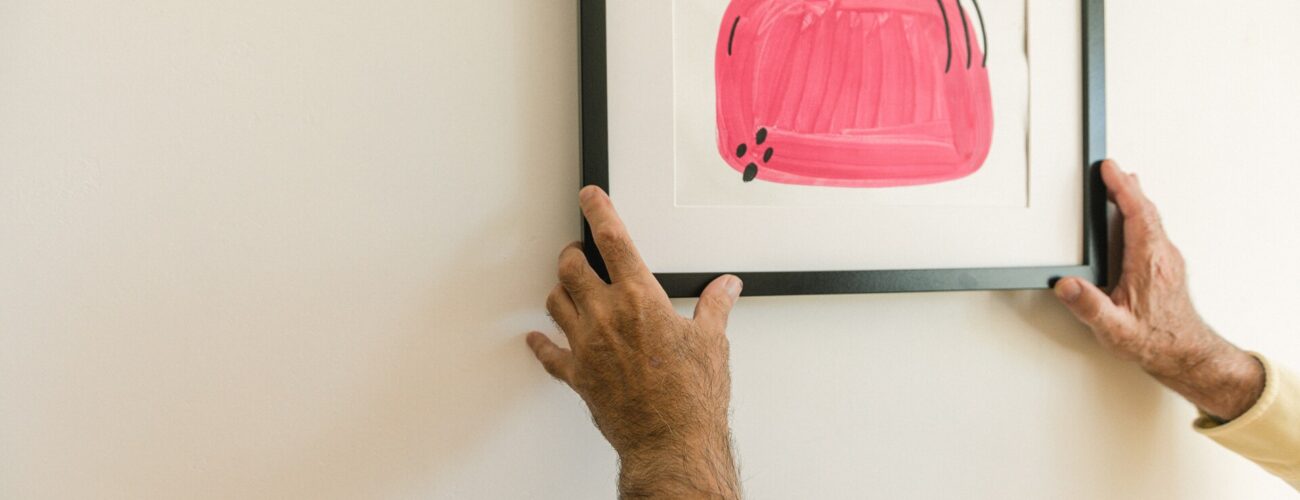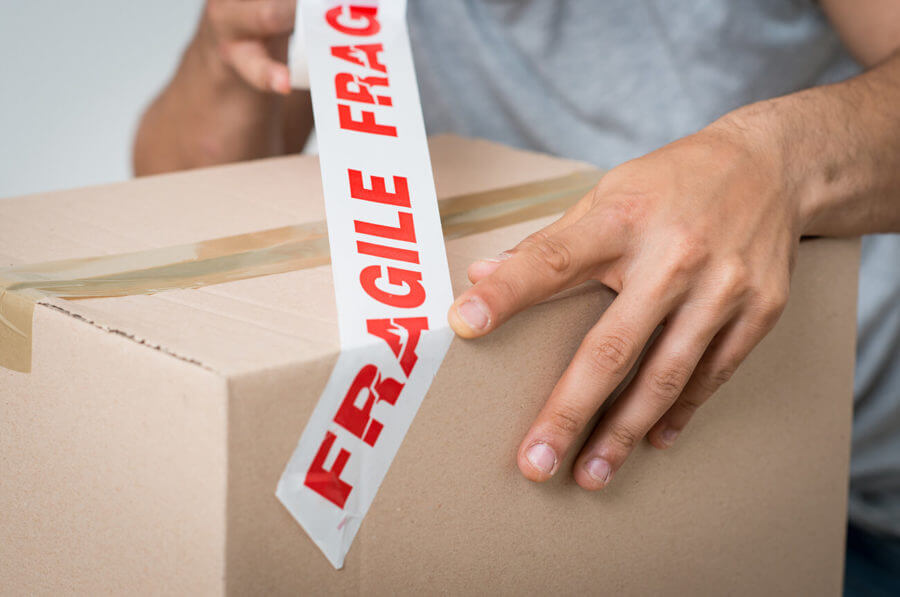

How to Pack Paintings When Moving Across the Country
Posted in How-to on September 1, 2023
You’ve invested time, money, and heart into building your art collection. Now, as you plan to traverse the breadth of our beautiful country, your masterpieces need to join you on this adventure. But how to pack paintings for moving and ensure their safe arrival?
If you’re uncertain about how to pack art for moving, begin by gently cleaning the painting to eliminate dust. Next, cover it with glassine paper to avert any scratching. Layer bubble wrap over this for cushioning and insert the wrapped painting into a specialized picture box. Any empty spaces within the box should be filled with packing peanuts. Afterward, seal the box securely and ensure to label it as ‘Fragile Artwork.’ Always store and transport the box in a vertical position to avoid unnecessary pressure. Lastly, you might want to consider engaging the services of cross-country movers.
Before Figuring Out How to Pack Paintings, Asses Your Inventory
Remember, preparation is the key to moving cross-country safely. A thorough understanding of your collection will help you plan the best way to pack and move your paintings. Before packing, it’s crucial to assess your inventory. There are some tips to help you do just that, including whether you’ll need special handling for these items and taking inventory.
Evaluating the Size, Medium, and Condition of the Paintings
This step helps you understand the materials needed for protection and the care required during the move. Larger paintings may need custom-made crates, while smaller ones could be packed in standard-sized boxes. The medium of the painting also determines the care – for example, oil paintings require different handling compared to acrylics. Also, check the condition of each painting. If they are already fragile, they might need extra care.
Determining if Any Special Handling or Climate-Controlled Transportation Is Required
Not all paintings can withstand the heat of summer or the cold of winter (if you’re relocating during winter to save on costs). If your painting is sensitive to temperature or humidity changes, you might need to arrange for climate-controlled transportation. Similarly, certain artworks might require specialized handling during the move.
Taking Inventory and Documenting Each Painting for Insurance Purposes
Make a new apartment checklist, and list all the paintings you’re moving. Before you start preparing for cross-country moving, document the condition of each painting with photographs and notes. These will serve as your proof in case any damage occurs during the move. If your collection is valuable, consider getting insurance to cover potential loss or damage during transit.

Wondering How to Pack Framed Art for Moving? Start by Gathering Packing Supplies
The first crucial step in the art of moving art is to gather the right supplies. And we’re not just talking about the standard stuff – your beloved artwork requires something a bit more specialized. From acid-free and archival-quality packing materials to protective bubble wrap, packing paper, and foam corners – every item plays a crucial role. And let’s not forget about the sturdy housing for your masterpieces – different sizes of cardboard boxes or wooden crates.
Acid-Free and Archival-Quality Packing Materials
These materials are designed to prevent degradation and discoloration of the artwork over time. Glassine paper is a common archival-quality packing material that is used as a first layer of protection on the surface of your paintings.
Bubble Wrap, Packing Paper, and Foam Corners for Protection
These cushioning materials can help to absorb shock during transportation, protecting your artwork from damage. Bubble wrap can be used for overall protection, while foam corners can specifically protect the vulnerable corners of the paintings. If you’ve got a headache from wondering how to pack framed pictures for moving, foam corners are a must. Packing paper can be used to fill voids within the box and keep the artwork in place.
Sturdy Cardboard or Wooden Crates for Added Support
Depending on the size and fragility of your painting, you may need to consider stronger, more protective packaging. Gather enough sturdy cardboard boxes as they can suffice for smaller, less delicate pieces, but for larger or more valuable artwork, wooden crates offer the highest level of protection.
Don’t Forget to Prepare the Paintings
Now that we’ve gathered our protective supplies, it’s time for a crucial step – preparing the paintings themselves. This may seem like a minor detail, but it’s an essential part of ensuring your art remains safe and secure during the move. Here’s how to prepare the paintings themselves to ensure their safety:
- If possible, carefully remove paintings from their frames. This prevents any damage to the frames during the move and allows for more compact packing. Remember to wrap and pack the frames separately for added protection.
- Clean the surface of the paintings with a soft, lint-free cloth. This gentle cleaning removes dust and dirt that might scratch or damage the surface of the painting during transit. Be gentle and avoid using cleaning products unless necessary and safe for your specific painting.
- Apply a layer of glassine paper or acid-free tissue to protect the surface. This protective layer prevents direct contact with other protective materials that might damage the surface of the painting. Glassine paper is a common choice as it’s smooth, resistant to air and water, and doesn’t leave any residue on the artwork.
Remember, the aim is to get your precious artwork to your new home in the same condition they left the old one.

Start with Wrapping and Padding the Paintings
Now that we’ve prepared our paintings, it’s time to start boxing them up. It’s crucial to begin by placing a sheet of acid-free tissue or glassine paper on the front of the painting. This acts as a protective layer against any scratches or stains that might occur during the relocation while also preventing any potential chemical interactions between the paint and the protective materials.
Wrap ‘Em Up!
This is followed by covering the painting with a layer of bubble or foam wrap. This protective layer works as a cushion, absorbing any shocks or jolts that could potentially harm the artwork during transportation. Remember, the bubble side should be facing out to avert any possible indentations on the painting.
Seal Everything
Once you’ve securely wrapped the painting, you should seal the wrap with packing tape. Take care not to apply tape directly onto the painting itself. For an extra layer of safety, consider adding foam corner protectors or additional padding to the edges and corners of the painting. These precautions ensure your art pieces remain in excellent condition throughout their journey to your new home.

Get Ready for Packing
Now that our beloved artworks are properly cleaned, prepped, and swaddled in protective wrapping, it’s time to make them travel-ready. This stage is all about placing the wrapped paintings into the perfect housing – be it sturdy cardboard or resilient wooden crates – and ensuring they’re snug and secure. Filling spaces, firm sealing, and clear labeling are all part of the drill. Here’s how to pack them up for the journey:
- Depending on the size and fragility of your artwork, a sturdy cardboard box might be sufficient. You want to choose a box or crate that snugly fits your artwork without squeezing or pressuring it. However, for larger or more delicate pieces, consider using wooden crates for added protection. Be sure to place the painting inside the crate or box gently, keeping it in an upright position.
- The last thing you want during transport is for your precious artwork to be jostling around inside the crate. Filling any empty space in the crate with packing peanuts or foam for stability ensures the painting won’t move around during transit. The aim is to create a snug fit but without applying pressure to the painting itself. So ensure not to overpack the box, as too much pressure can also damage the artwork.
- Now, it’s time to seal the deal. Close the crate or box and secure it firmly with packing tape. Securing the crates with sturdy tape and labeling them as fragile and artwork serves two purposes. First, it informs anyone handling the box that it contains fragile items. Second, it helps you easily identify the boxes containing your artwork when you start unpacking at your new home.
Following these steps will ensure that your paintings are well-protected and prepared for their cross-country journey. A little extra care and attention at this stage can go a long way in ensuring your artwork arrives safe and sound at its destination.
If you need to ship just a few items, the following video offers some advice from a professional.
Hire Movers to Handle the Delicate Work
When your art collection includes valuable or extremely delicate pieces, the best option may be to enlist professional help. Specialized long-distance movers are experienced in handling and transporting artwork, taking the worry off your shoulders. These professionals are trained to handle various mediums and sizes of art, and they have the proper equipment and packing materials to ensure the safe transit of your pieces. They’ll also have options for climate-controlled vehicles and moving insurance for high-value items.
Why Should You Choose Professionals?
While hiring movers and investing in cross-country moving services can be an added expense, the peace of mind from knowing your treasured artwork is in capable hands can be worth the cost. Always research and choose a reputable company with positive reviews and a proven track record in art handling. After all, moving your precious paintings isn’t just about getting them from point A to point B – it’s about ensuring they arrive in their new home in the same condition they left the old one.

Follow Our Guide and Your Artwork Will Be Intact
Moving artwork is indeed a delicate task, but armed with the right knowledge and careful planning, it’s completely manageable. By following our comprehensive guide, from assessing your inventory and gathering quality packing materials to careful wrapping, packing, and even opting for professional movers, you’re setting up your precious artwork for a safe moving across the country.
Remember, each piece of art carries a story – whether it’s a valuable masterpiece, a cherished gift, or your own creation, its safe preservation is crucial. Take each step with care, and your artwork will arrive at its new home just as it left the old one – intact and ready to bring beauty to your space.
Looking for an experienced, reliable, and careful team to handle your precious artwork? Look no further than Cross Country Movers! We are specialists in long-distance moving, especially when it comes to precious paintings. We know the value and sentiment behind each piece, and we are here to make sure they reach their destination safely. Don’t leave it to chance – choose a team that understands the art of moving art. Contact Cross Country Movers today for a free quote and let’s make your move a masterpiece!
FAQ
Can I Pack Multiple Paintings Together in One Crate?
Yes, you can pack multiple paintings together, provided they’re separated by cardboard, foam, or bubble wrap. However, it’s important to ensure the crate isn’t overpacked, causing pressure on the paintings.
Do I Need to Remove the Glass or Plexiglass From Framed Paintings?
It’s generally safer to remove the glass or plexiglass to prevent potential damage during transit. If you leave it on, make sure to cover it with masking tape in a cross pattern to prevent shattering.
Should I Use Glassine Paper or Acid-Free Tissue to Protect the Paintings?
Both materials work well. Glassine paper is often used because it’s smooth and resistant to air and water. Acid-free tissue is also a good option, as it won’t react with the paint.
What Are the Advantages of Using Wooden Crates Versus Cardboard Boxes?
Wooden crates are more durable and sturdy than cardboard boxes, providing better protection for valuable or fragile artwork. However, they’re also more expensive and heavier.
Can I Pack and Transport Paintings in My Personal Vehicle During the Move?
Yes, you can, especially for smaller pieces. Just ensure they’re securely placed so they won’t move or fall during transit.
Should I Inform the Moving Company About the Presence of Valuable Artwork?
Absolutely, yes. This will allow them to take necessary precautions and provide suitable insurance coverage.
Are There Any Special Considerations for Transporting Oil Paintings Versus Other Mediums?
Yes, oil paintings can be more sensitive to temperature and humidity changes. They also require a longer drying period, so extra care should be taken to avoid touching the paint surface.
What Should I Do if I Notice Any Damage to a Painting After Unpacking?
Contact your cross-country moving company immediately, especially if you have insurance. It’s also a good idea to consult a professional art restorer to assess the damage.






